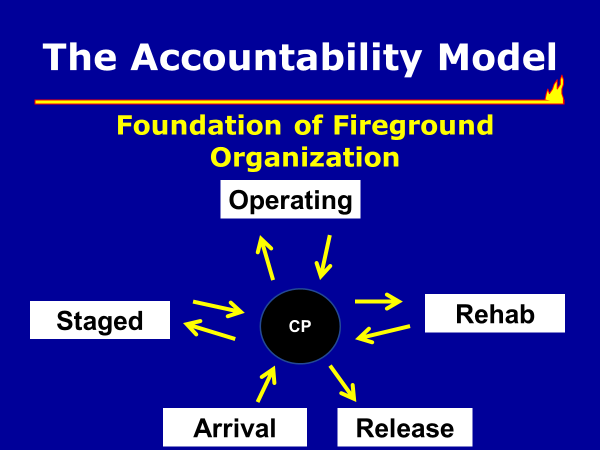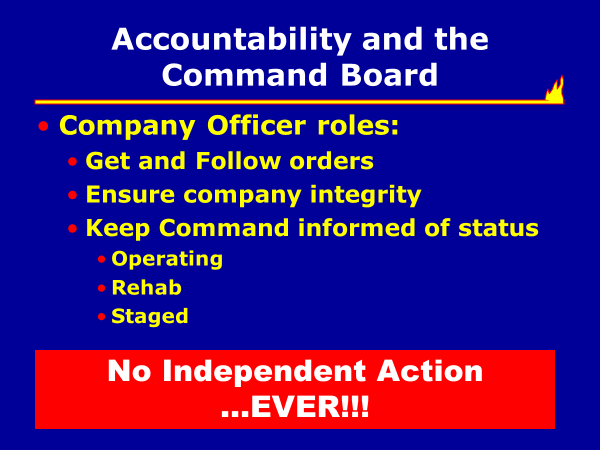A strong accountability system based on solid SOP’s is the foundation for which incident commanders must build upon for their organization to achieve safe fireground operations. As you can see from the flow chart below, the command post must be the organizational manifold through which all orders and directives flow. Notice that from arrival to release, the flow incudes the three operational statuses (staged, operating, and rehab). No company should change that status without first going through the command post. This is best done face-to-face but may be done via radio ONLY if authorized by the incident commander. The key point to be made here is that there are no arrows running between any of the operational status locations. Going from staged to operating, operating to rehab, or rehab to staging must be communicated through the command post first. Anything else is an example of freelancing and a scene of chaos without knowing where everyone is and what they are doing.
Think of it this way: If you think something is the right thing to do, it automatically becomes the wrong thing to do if it does not go through the command post first.

The next graphic depicts the company officer’s responsibility role in accountability. Notice that the emphasis on “No Independent Action Ever”; that is because the only way command can keep the company safe is if command knows where that company is located on the fireground. This process is very simple but requires discipline. Lack of discipline is the reason for most, if not all fireground accountability problems. It is key to remember that if you are not doing this when nothing is showing or when you are on the small incident, it is next to impossible to pull it off during a big incident. Practice at the small incident so you can shine at the BIG ONE.

Lastly, the method by which the incident commander best controls the entire fireground should be through reinforcement of the process of decentralization. Assigning division commanders to the areas of most concern will allow command to better control the troops working in these areas. Use these same division commanders to do the mini-PARS if you will, in their own divisions and keep command informed of who is there, what they are doing, and who is coming out to report back to the command post to be moved to one of the other status locations. To tie it all together, disciplined command post protocol practiced by the entire fireground allows for a smoother and safer operation.

I invite you to join me and other members of the Society to the 2018 Fall Instructor Development Conference this September in Tinley Park, Illinois. My presentation, Fireground Strategies: Ensuring Hard Environment Success will seek to challenge existing and prospective officers in preparation, attitude, philosophical approach, and operational and organizational skills both in the hard environment (on the fireground) and in the soft environment (the areas and time when you are preparing yourself and your subordinates for the fireground). Learn more and register by visiting the ISFSI website, ISFSI.org.